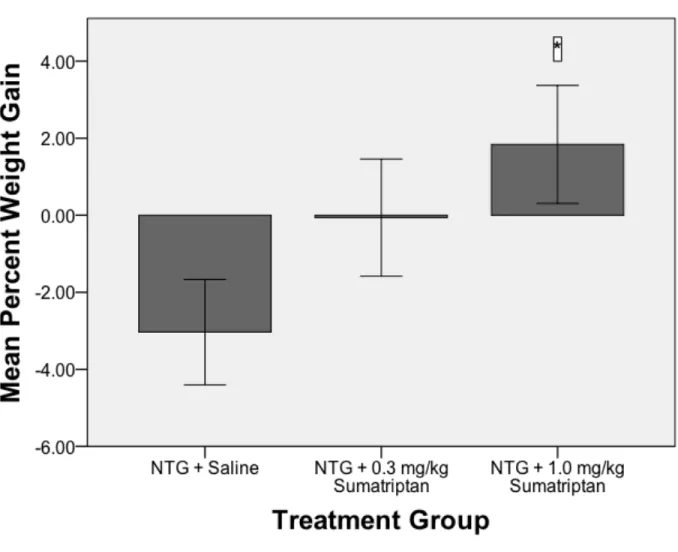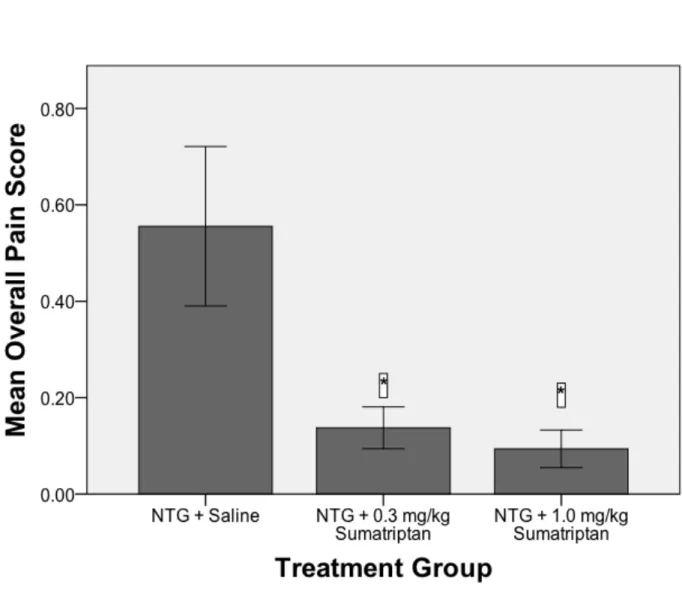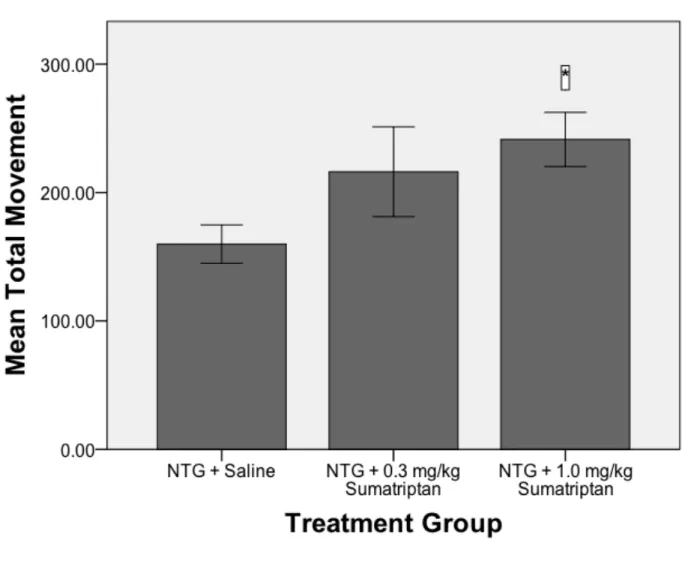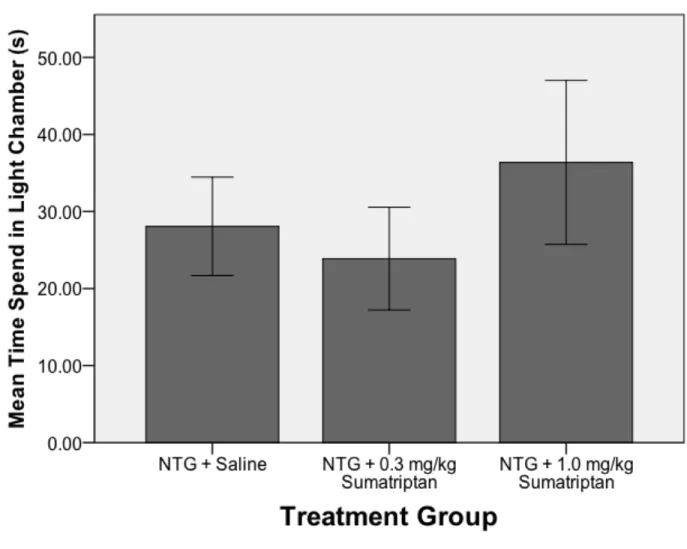Sumatriptan dose-dependently attenuated a) weight loss, b) increased rat grimace scale pain scores, and c) decreased movements in the modified light-dark box. In addition, rats given the highest dose of sumatriptan tended to spend more time in the light part of the light-dark box. In addition, 11% of the total population in the United States and Western Europe have significant problems with migraine headaches (Goadsby, Lipton, & Ferrari, 2002).
Due to the high incidence of migraine, this loss of productivity amounts to 25 million lost working days per year in the. The onset of migraine attacks is usually characterized by a premonition phase consisting of predictable symptoms such as changes in mood, pain in the neck and back, flu-like symptoms, phonophobia (hypersensitivity to sounds) and/or fatigue that can occur for hours up to days before an attack (Bigal et al, 2009). Triptans are effective by altering blood flow in the brain (Humphrey et al, 1990).
NTG-induced migraine attacks have since been reproduced in rodents in an attempt to establish a valid rodent model of migraine (Iversen, 2001). The previous study established predictive validity in that the repeated NTG-induced migraine model demonstrated performance on the modified light-dark box test that accurately represented the photophobia and motion sensitivity reported in the human condition. To further validate the previous rodent model of NTG-induced migraine, in the present study, we sought to examine the effects of the commonly used acute migraine drug, sumatriptan, in a 5 NTG-induced migraine.
As a result, we predict that sumatriptan-treated animals will maintain body weight, show lower pain scores quantified by the Rat Grimace Scale, spend more time in the light chamber in the modified light-dark box, and move more in the modified light-dark box. box compared to untreated animals experiencing migraine.
Materials and Methods
To illustrate a drug reversal effect, this study involved three experimental conditions in which rats received saline, 0.3 mg/kg sumatriptan, or 1.0 mg/kg sumatriptan 30 minutes after each NTG injection. The tests performed were the Rat Grimace Scale, followed immediately by the modified light/dark box. All injections were administered to rats IP, with the second injection administered on the opposite side of the animal's body relative to the first.
The concentration of NTG (Copperhead Chemical Company Inc., SDM®27, Tamaqua, PA, USA) used was 5 mg/kg/ml dissolved in a 50% ethanol/50% propylene glycol solution. The original 6 mg/0.5 ml preparation of injectable sumatriptan succinate (PAR Pharmaceutical, Woodcliff. Lake, New Jersey, USA) was diluted using physiological saline to obtain experimental concentrations of 0.3 mg/kg and 1.0 mg/ kg to be achieved. The Rat Grimace Scale is a partially automated method designed to quantify a rat's pain state by observing facial expressions (Sotocinal et al., 2011).
Headshot photographs with clear images of the face, ears, and whiskers were taken of each rat using a 16 GB iPad mini 5-megapixel iSight camera with Retina display, 2 hours after NTG. 2” indicated high confidence in the clear appearance of the action unit (Sotocinal et al., 2011). The four action units demonstrated by rats in pain included 1) orbital contraction (partial/complete closure of the eyes), 2) nose/cheek flattening (disappearance of the crease between the cheek and whisker pads), 3) ear changes (ears folding and tilting forward). or outward, resulting in a pointed shape), and 4) whisker changes (whiskers move forward, away from the face and stand on the tip). The modified light-dark box was used to quantify light avoidance and reduced motor activity, two measures commonly associated with episodes of migraine in humans.
The CPP box was adapted for this experiment by covering the tops of the black and gray chambers, which are normally transparent, with dark construction paper to prevent light from entering these parts. After the Rat Grimace pictures, the rats were transferred to the gray middle chamber of the modified light-dark box. The gray chamber door remained closed for one minute to allow each animal to acclimate to its new environment.
During the 10-minute interval, total movement throughout the apparatus was recorded as well as the amount of time spent in the white (light). Previous work validating a recurrent NTG migraine model in rats determined the dependent measures to be investigated. These variables included percent change in weight, overall rat grimace scale pain score, time spent in the light chamber of the modified light-dark box, and the degree of movement recorded by the modified light-dark box.
Results
Sumatriptan dose-dependently increased mean movement scores during the modified light-dark box test periods. Planned comparisons using Fisher's LSD showed that animals treated with 1.0 mg/kg sumatriptan had significantly higher mean movement scores compared to saline animals (p<0.045). The effects of sumatriptan on time spent in the light chamber of the modified light-dark box are summarized in Figure 4.
Treatment with 1.0 mg/kg sumatriptan showed an upward trend suggesting an increase in the amount of time spent in the light room.
Discussion
Raters used in the current study quantified pain scores for the 5 NTG control animals in the range of 0.5, which was slightly higher than previously reported by Johnson et al. Furthermore, these findings, together with the similar results from the previous work in this laboratory, on the reliability of this test as a measure of pain during NTG migraine episodes and its attenuation with appropriate treatment. The present study replicated the previous finding of NTG migraine-induced sensitivity to movement in the five NTG migraine episodes produced.
Additionally, our drug manipulation using sumatriptan dose-dependently increased locomotion scores compared to NTG saline animals, suggesting attenuation of NTG-induced locomotion sensitization due to migraine pain. The predictability of this behavioral endpoint under NTG migraine conditions and treatment parallels the human clinical condition and provides additional validation for our recurrent rodent model of NTG migraine. To assess this in our model, the time spent in the light portion of the modified light-dark box was measured.
The light source used was simply ambient room light coming into a box with a transparent lid. Another theory suggests variability in performance rather than the need to change lighting parameters in the current testing process. It is interesting to note that among the rats in the 1.0 mg/kg sumatriptan group, those that showed higher RGS scores spent less time in the bright part of the light-dark box and this correlation was -0.70 .
Therefore, we believe that our NTG migraine simulation shows the limited effectiveness of current anti-migraine drugs in some. Although this behavioral aspect was not systematically quantified across treatment conditions in the present study, this finding suggests that it may be a clinically relevant endpoint in The recurrent 5 NTG migraine model demonstrates two clinically relevant behavioral endpoints for migraine: sensitivity to movement and photophobia .
Other important homologies demonstrated in NTG migraine-induced animals are evidence of pain expression shown by Rat Grimace pain scores and weight loss, which was interpreted as nausea. The mouse grimace scale: A partially automated method for quantifying pain in the laboratory mouse via facial expressions. Mean percent weight gain as a function of treatment group in rats at their 5th NTG migraine episode.
The mean pain scores on the Rat Grimace Scale as a function of treatment group in rats during their fifth NTG migraine episode. Mean movement (number of beam breaks) in the modified light-dark box as a function of treatment group in rats during their 5th NTG migraine episode.



